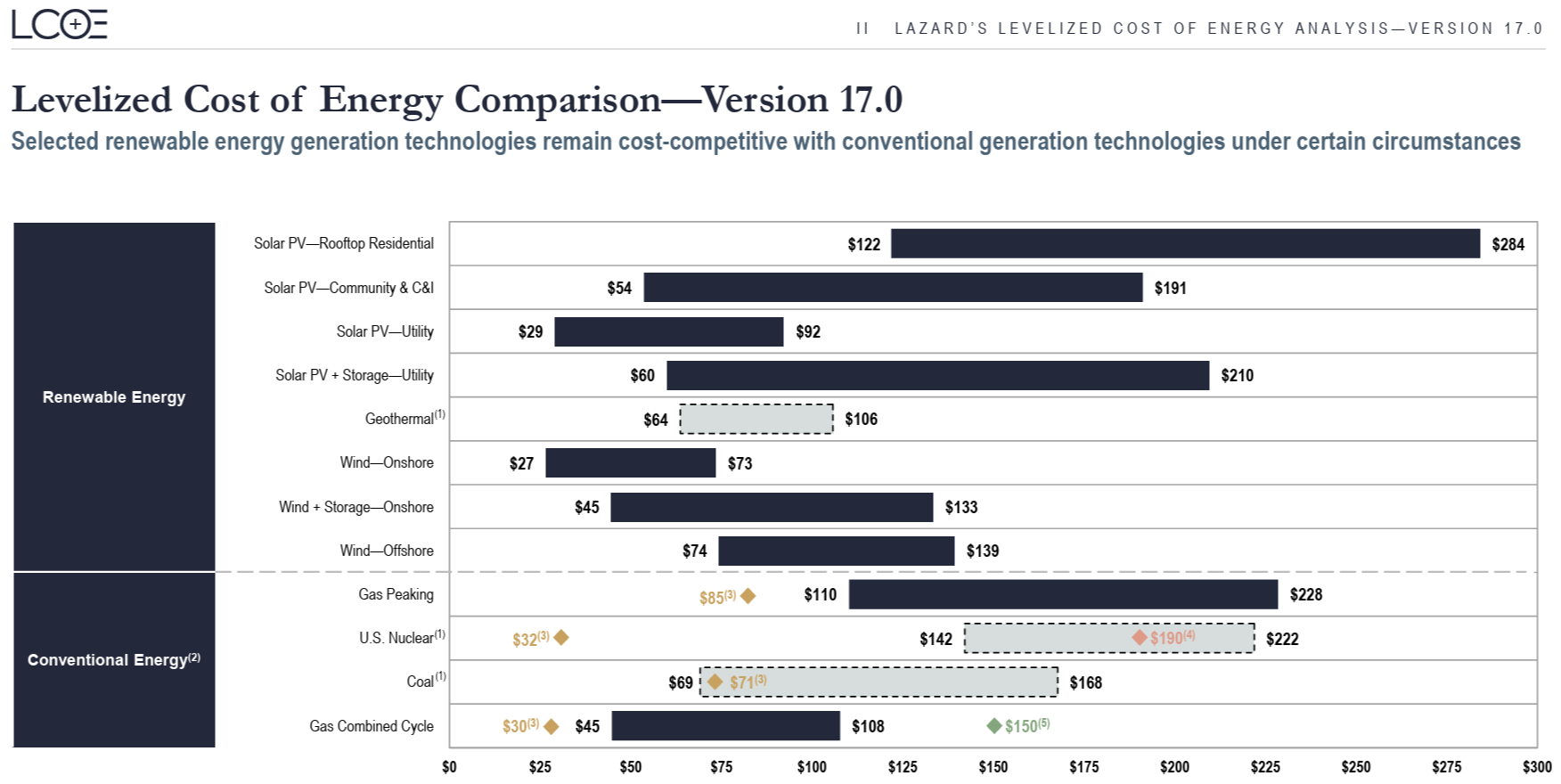Lazard Report on LCOE of Renewables

Note: This article was originally published here.
Another report on next generation energy costs can help us draw some important conclusions.
This chart is from Lazard, a highly respected advisory on energy markets. Further validating the chart that was presented by NextEra Energy Resources (see our recent post on this topic: https://lnkd.in/gaTsfSVq), the Lazard report shows that the lowest cost for new energy deployments are utility-scale solar, utility-scale onshore wind, natural gas and geothermal. Nascent sources such as small nuclear reactors have yet to make it onto the chart.
Apart from natural gas, all of these energy sources have a very low variable cost as they effectively don’t consume fuel. Meanwhile, fixed costs will continue to go down with increased manufacturing volume — and in the case of geothermal, the application of drilling and fracking technology together with skilled labor from the natural gas industry will help lower costs. (Just take a look at Fervo Energy's leadership team to see the labor shift from natural gas to geothermal energy.) All of these cost trends will benefit from increased volumes and high growth markets such as supplying energy to data centers.
Our conclusion is that we should allow the market to choose technology winners. For example, it makes more financial sense to build utility-scale solar instead of rooftop solar. As the chart from Lazard shows, utility-scale solar is now one of the cheapest forms of electricity to generate, at $.029-$.092/kWh. In comparison, rooftop solar costs 3-4 times more, at $.12-$.28/kWh.
We should also look for ways to drive down the cost of storage, whether batteries or other innovations. Incentives might have a role to play, but ultimately, we should be supporting market structures that drive down the cost of energy. Enabling an electricity market that is competitive and allows for all energy sources to be treated like commodities will favor lower-cost energy sources. If the current trends hold true, this competition will favor energy sources that are not dependent on the extraction of fuels. These sources will be both abundant and have the lowest variable costs in the future.
📚 Background reading:
• Lazard's full report: https://www.lazard.com/media/xemfey0k/lazards-lcoeplus-june-2024-_vf.pdf
• Our recent post about NextEra Energy: https://lnkd.in/gaTsfSVq
• Fervo's team: https://fervoenergy.com/team/
— Dave Welch